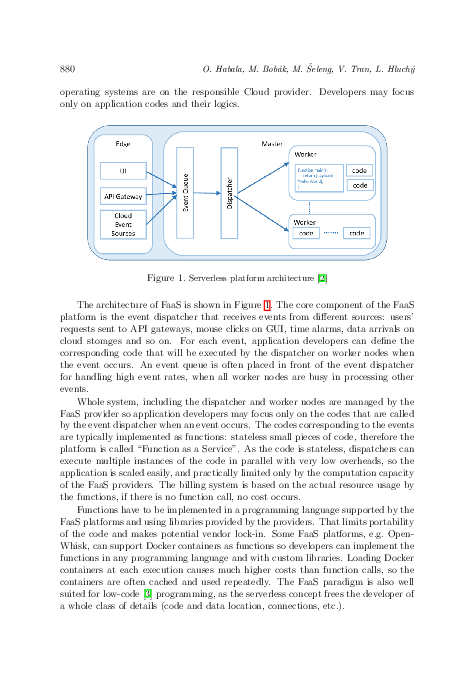Architecture of a Function-as-a-Service Application
keywords: FaaS, serverless computing, cloud computing
Serverless computing and Function-as-a-Service (FaaS) are programming paradigms that have many advantages for modern, distributed and highly modular applications. However, the process of transforming a legacy, monolithic application into a set of functions suitable for a FaaS environment can be a complex task. It may be questionable whether the obvious advantages received from such a transformation outweigh the effort and resources spent on it. In this paper we present our continuing research aimed at the transformation of legacy applications into the FaaS paradigm. Our test subject is an airport visibility system, a sub-class of the meteorological services required for airport operations. We have chosen to modularize the application, divide it into parts that can be implemented as functions in the FaaS paradigm, and provide it with a simple cloud-based data management layer. The tools that we are using are Apache OpenWhisk for FaaS and Airflow for workflow management, Apache Airflow for workflow management and NextCloud for cloud storage. Only a part of the original application has been transformed, but it already allows us to draw some conclusions and especially start forming a generalized picture of a Function-as-a-Service application.
mathematics subject classification 2000: 68-U35
reference: Vol. 42, 2023, No. 4, pp. 878–895


